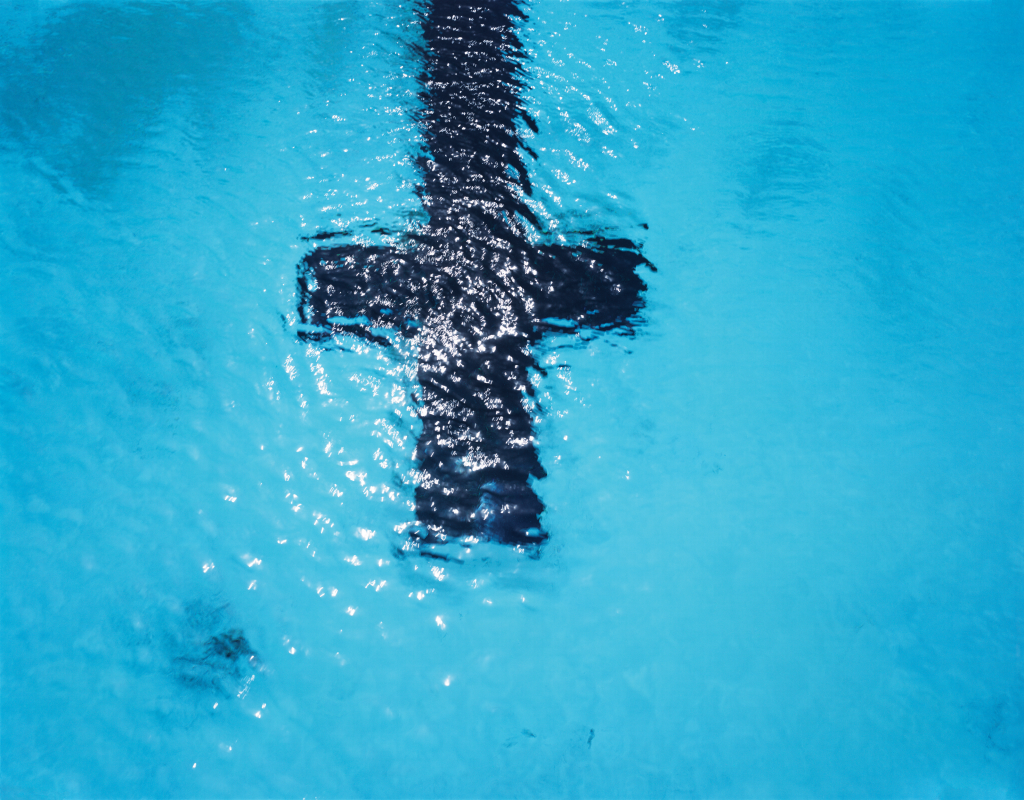Joel MeyerowitzThe Elements

The precision of an Olympic dive, the elemental power of air and water encountering each other with explosive force, the pummelled surface of a training pool — these are the visual properties of Joel Meyerowitz’s series The Elements: Air/Water Part 1. In some ways, these luscious laminated images are witness to the development of colour reproduction: their huge museum dimensions and the radiating blues and whites emitting a force field are only possible with the new generation of technically sophisticated large-format printers.
Yet these photographs represent for Meyerowitz not just a fusion of his practice over forty-six years but also a dramatic shift in seeing. Unlike his Aftermath series, for which Meyerowitz walked with his camera among the ruins of the World Trade Centre for nine months, these photographs were shot in a day and emerged from observations made while shooting a video on championship divers. Yet it was the vision of the sheer elemental havoc of 9/11, of the force that fused different properties together, that prepared him to look at things differently. He shifted from a narrative compositional approach to the conceptual images of the new work.
Photography has the ability to freeze the decisive moment, allowing us to linger on the impact long after the diver has surfaced. As Meyerowitz observed from the Swimming Hall of Fame’s viewing room: even though you can make a picture in a thousandth of a second you can simultaneously witness something with time for reflection. The bubbles slowly took the shape of a mushroom cloud that gradually dispersed back into the atmosphere. They represent the raw elements of water and air forced upon each other, the basis for the abstract dynamics of Meyerowitz’s compositions and dumb photographs.
These are not narrative images, but rather the elemental properties of his subject. They differ from previous series such as Cape Light or Bay/Sky in that they do not have a horizon line or a pictorial function. Meyerowitz sensed he was letting go of something he treasured, replacing it with large-format images of phenomena in a state as close to the original as possible: I just turned seventy, maybe the whole elements project has come to me now because I am this age. I am looking at the basic materials of the world, air and water, not in relation to things as before but to know them for their properties.
There are visual links in his images with Bill Viola’s Five Angels for the Millennium or David Hockney’s Paper Pools, but both compositionally and psychologically they inhabit different territory. Air/Water has more in common with the observations of J.M.W. Turner and his tumultuous seas. Meyerowitz wants to communicate the magnitude of what he experienced on an immersive visual surface. Adamant that he has always trusted that some message from the world will keep tapping at his consciousness, the process of photography continually offers him the possibility of getting to another plane of understanding, and what a gift that is.
